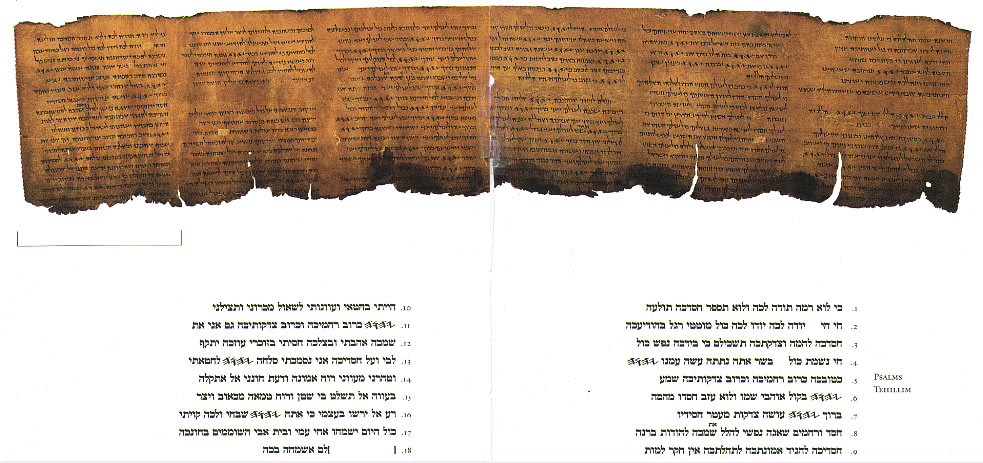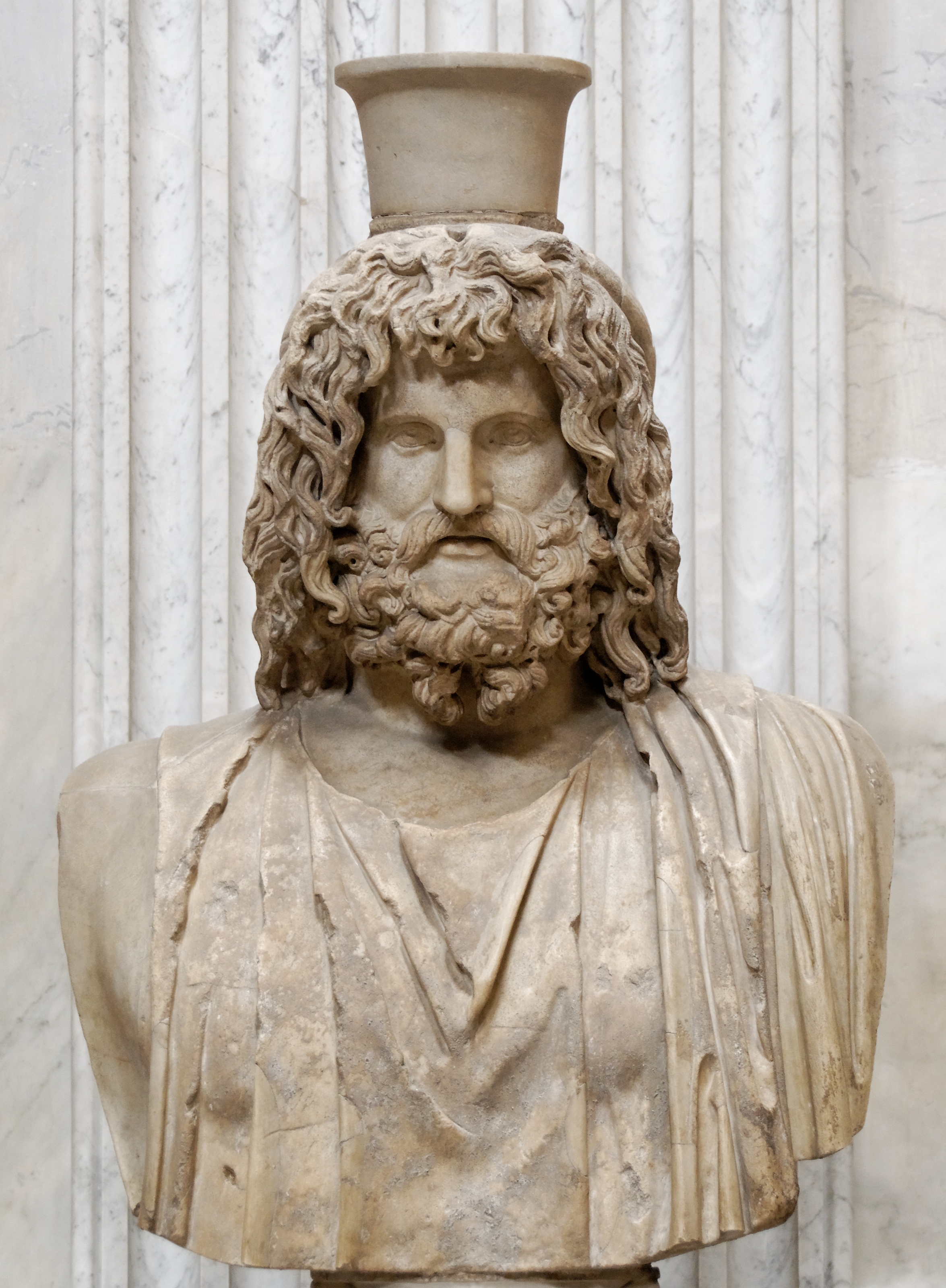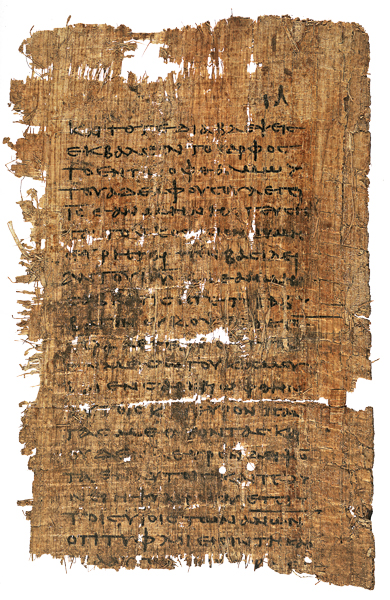|
Historiography Of Early Christianity
Historiography of early Christianity is the study of historical writings about early Christianity, which is the period before the First Council of Nicaea in 325. Historians have used a variety of sources and methods in exploring and describing Christianity during this time. The growth of Christianity and its enhanced status in the Roman Empire after Constantine I led to the development of a distinct Christian historiography, influenced by both Christian theology and the Development of the Christian Biblical canon, encompassing new areas of study and views of history. The central role of the Bible in Christianity is reflected in the preference of Christian historians for written sources, compared to the classical historians' preference for oral sources and is also reflected in the inclusion of politically unimportant people. Christian historians also focused on development of religion and society. This can be seen in the extensive inclusion of written sources in the first '' Ecc ... [...More Info...] [...Related Items...] OR: [Wikipedia] [Google] [Baidu] |
Early Christianity
Early Christianity (up to the First Council of Nicaea in 325) spread from the Levant, across the Roman Empire, and beyond. Originally, this progression was closely connected to already established Jewish centers in the Holy Land and the Jewish diaspora. The first followers of Christianity were Jews or proselytes, commonly referred to as Jewish Christians and God-fearers. The Apostolic sees claim to have been founded by one or more of the apostles of Jesus, who are said to have dispersed from Jerusalem sometime after the crucifixion of Jesus, c. 26–36, perhaps following the Great Commission. Early Christians gathered in small private homes, known as house churches, but a city's whole Christian community would also be called a church – the Greek noun ἐκκλησία (''ekklesia'') literally means assembly, gathering, or congregation but is translated as church in most English translations of the New Testament. Many early Christians were merchants and others who had prac ... [...More Info...] [...Related Items...] OR: [Wikipedia] [Google] [Baidu] |
Hegelianism
Georg Wilhelm Friedrich Hegel (; ; 27 August 1770 – 14 November 1831) was a German philosopher. He is one of the most important figures in German idealism and one of the founding figures of modern Western philosophy. His influence extends across the entire range of contemporary philosophical topics, from metaphysical issues in epistemology and ontology, to political philosophy, the philosophy of history, philosophy of art, philosophy of religion, and the history of philosophy. Born in 1770 in Stuttgart during the transitional period between the Enlightenment and the Romantic movement in the Germanic regions of Europe, Hegel lived through and was influenced by the French Revolution and the Napoleonic wars. His fame rests chiefly upon ''The Phenomenology of Spirit'', ''The Science of Logic'', and his lectures at the University of Berlin on topics from his ''Encyclopedia of the Philosophical Sciences''. Throughout his work, Hegel strove to address and correct the problemat ... [...More Info...] [...Related Items...] OR: [Wikipedia] [Google] [Baidu] |
Hellenistic Religion
The concept of Hellenistic religion as the late form of Ancient Greek religion covers any of the various systems of beliefs and practices of the people who lived under the influence of ancient Greek culture during the Hellenistic period and the Roman Empire ( 300 BCE to 300 CE). There was much continuity in Hellenistic religion: people continued to worship the Greek gods and to practice the same rites as in Classical Greece. Change came from the addition of new religions from other countries, including the Egyptian deities Isis and Serapis, and the Syrian gods Atargatis and Hadad, which provided a new outlet for people seeking fulfillment in both the present life and the afterlife. The worship of deified Hellenistic rulers also became a feature of this period, most notably in Egypt, where the Ptolemies adapted earlier Egyptian practices and Greek hero-cults and established themselves as Pharaohs within the new syncretic Ptolemaic cult of Alexander the Great. Elsewhere, ... [...More Info...] [...Related Items...] OR: [Wikipedia] [Google] [Baidu] |
Second Temple Judaism
Second Temple Judaism refers to the Jewish religion as it developed during the Second Temple period, which began with the construction of the Second Temple around 516 BCE and ended with the Roman siege of Jerusalem in 70 CE. The Second Temple period was marked by the emergence of multiple religious currents as well as extensive cultural, religious, and political developments among Jews. It saw the progression of the Hebrew Bible canon, the synagogue, and Jewish eschatology. Additionally, the rise of Christianity began in the final years of the Second Temple period. According to Jewish tradition, authentic prophecy (, ) ceased during the early years of the Second Temple period; this left Jews without their version of divine guidance at a time when they felt most in need of support and direction. [...More Info...] [...Related Items...] OR: [Wikipedia] [Google] [Baidu] |
Christianity In The 20th Century
Christianity in the 20th century was characterized by an accelerating secularization of Western society, which had begun in the Christianity in the 19th century, 19th century, and by the spread of Christianity to non-Western regions of the world. Christian ecumenism grew in importance, beginning at the Edinburgh Missionary Conference in 1910, and accelerated after the Second Vatican Council of the Catholic Church, The Liturgical Movement became significant in both Catholic and Protestant Christianity, especially in Anglicanism. At the same time, state-promoted atheism in communism, communist Eastern Europe and the Soviet Union brought Christians in the Eastern Bloc, persecution to many Eastern Orthodox and other Christians. Many Orthodox came to Western Europe and the Americas, leading to greatly increased contact between Western Christianity, Western and Eastern Christianity. Nevertheless, church attendance declined more in Western Europe than it did in the East. The Roman Cat ... [...More Info...] [...Related Items...] OR: [Wikipedia] [Google] [Baidu] |
Syriac Christianity
Syriac Christianity ( syr, ܡܫܝܚܝܘܬܐ ܣܘܪܝܝܬܐ / ''Mšiḥoyuṯo Suryoyto'' or ''Mšiḥāyūṯā Suryāytā'') is a distinctive branch of Eastern Christianity, whose formative theological writings and traditional liturgies are expressed in the Classical Syriac language, a variation of the Aramaic language. In a wider sense, the term can also refer to Aramaic Christianity in general, thus encompassing all Christian traditions that are based on liturgical uses of Aramaic language and its variations, both historical and modern. Along with Greek and Latin, Classical Syriac was one of the three most important languages of Early Christianity. It became a vessel for the development of a distinctive Syriac form of Christianity which flourished throughout the Near East and other parts of Asia during Late Antiquity and the Early Medieval period, giving rise to various liturgical and denominational traditions, represented in modern times by several Churches which continue to ... [...More Info...] [...Related Items...] OR: [Wikipedia] [Google] [Baidu] |
Jewish Christians
Jewish Christians ( he, יהודים נוצרים, yehudim notzrim) were the followers of a Jewish religious sect that emerged in Judea during the late Second Temple period (first century AD). The Nazarene Jews integrated the belief of Jesus as the prophesied Messiah and his teachings into the Jewish faith, including the observance of the Jewish law. The name may derive from the city of Nazareth, or from prophecies in Isaiah and elsewhere where the verb occurs as a descriptive plural noun, or from both. Jewish Christianity is the foundation of Early Christianity, which later developed into Christianity. Christianity started with Jewish eschatological expectations, and it developed into the worship of a deified Jesus after his earthly ministry, his crucifixion, and the post-crucifixion experiences of his followers. Modern scholarship is engaged in an ongoing debate as to the proper designation for Jesus' first followers. Many see the term Jewish Christians as anachronistic g ... [...More Info...] [...Related Items...] OR: [Wikipedia] [Google] [Baidu] |
Gospel Of Thomas
The Gospel of Thomas (also known as the Coptic Gospel of Thomas) is an extra-canonical Logia, sayings gospel. It was discovered near Nag Hammadi, Egypt, in December 1945 among a group of books known as the Nag Hammadi library. Scholars speculate that the works were buried in response to a letter from Bishop Athanasius of Alexandria, Athanasius declaring a strict canon of Christian scripture. Scholars have proposed dates of composition as early as 60 AD and as late as 250 AD. Since its discovery, many scholars have seen it as evidence in support of the existence of a "Q source" which might have been very similar in its form as a collection of sayings of Jesus without any accounts of his deeds or his life and death, referred to as a sayings gospel. The Coptic language text, the second of seven contained in what modern-day scholars have designated as Nag Hammadi Codex II, is composed of 114 sayings attributed to Jesus. Almost two-thirds of these sayings resemble those found in t ... [...More Info...] [...Related Items...] OR: [Wikipedia] [Google] [Baidu] |
Didache
The ''Didache'' (; ), also known as The Lord's Teaching Through the Twelve Apostles to the Nations (Διδαχὴ Κυρίου διὰ τῶν δώδεκα ἀποστόλων τοῖς ἔθνεσιν), is a brief anonymous early Christian treatise written in Koine Greek, dated by modern scholars to the first or (less commonly) second century AD. The first line of this treatise is "The teaching of the Lord to the Gentiles (or Nations) by the twelve apostles". The text, parts of which constitute the oldest extant written catechism, has three main sections dealing with Christian ethics, rituals such as baptism and Eucharist, and Church organization. The opening chapters describe the virtuous Way of Life and the wicked Way of Death. The Lord's Prayer is included in full. Baptism is by immersion, or by affusion if immersion is not practical. Fasting is ordered for Wednesdays and Fridays. Two primitive Eucharistic prayers are given. Church organization was at an early stage of dev ... [...More Info...] [...Related Items...] OR: [Wikipedia] [Google] [Baidu] |
Religion In Ancient Rome
Religion in ancient Rome consisted of varying imperial and provincial religious practices, which were followed both by the people of Rome as well as those who were brought under its rule. The Romans thought of themselves as highly religious, and attributed their success as a world power to their collective piety ''(pietas)'' in maintaining Pax deorum, good relations with the gods. Their Polytheism, polytheistic religion is known for having honored List of Roman deities, many deities. The presence of Magna Graecia, Greeks on the Italian peninsula from the beginning of the historical period influenced Culture of ancient Rome, Roman culture, introducing some religious practices that became fundamental, such as the ''Cult (religious practice), cultus'' of Apollo. The Romans looked for common ground between their major gods and those of the Greeks (''interpretatio graeca''), adapting Greek mythology, Greek myths and iconography for Latin literature and Roman art, as the Etruscans h ... [...More Info...] [...Related Items...] OR: [Wikipedia] [Google] [Baidu] |
Christian Church
In ecclesiology, the Christian Church is what different Christian denominations conceive of as being the true body of Christians or the original institution established by Jesus. "Christian Church" has also been used in academia as a synonym for Christianity, despite the fact that it is composed of multiple churches or denominations, many of which hold a doctrinal claim of being the "one true church", to the exclusion of the others. For many Protestant Christians, the Christian Church has two components: the church visible, institutions in which "the Word of God purely preached and listened to, and the sacraments administered according to Christ's institution", as well as the church invisible—all "who are truly saved" (with these beings members of the visible church). In this understanding of the invisible church, "Christian Church" (or catholic Church) does not refer to a particular Christian denomination, but includes all individuals who have been saved. The branch theory, ... [...More Info...] [...Related Items...] OR: [Wikipedia] [Google] [Baidu] |
Church Fathers
The Church Fathers, Early Church Fathers, Christian Fathers, or Fathers of the Church were ancient and influential Christian theologians and writers who established the intellectual and doctrinal foundations of Christianity. The historical period in which they worked became known as the Patristic Era and spans approximately from the late 1st to mid-8th centuries, flourishing in particular during the 4th and 5th centuries, when Christianity was in the process of establishing itself as the state church of the Roman Empire. In traditional dogmatic theology, authors considered Church Fathers are treated as authoritative, and a somewhat restrictive definition is used. The academic field of patristics, the study of the Church Fathers, has extended the scope of the term, and there is no definitive list. Some, such as Origen and Tertullian, made major contributions to the development of later Christian theology, but certain elements of their teaching were later condemned. Great Fathe ... [...More Info...] [...Related Items...] OR: [Wikipedia] [Google] [Baidu] |







.jpg)


